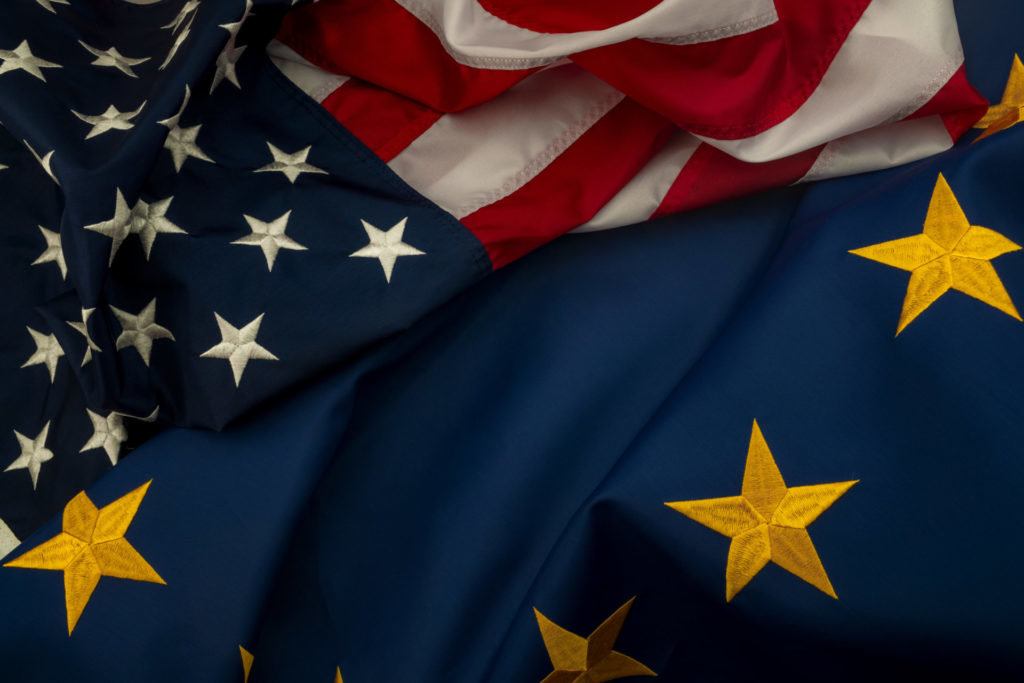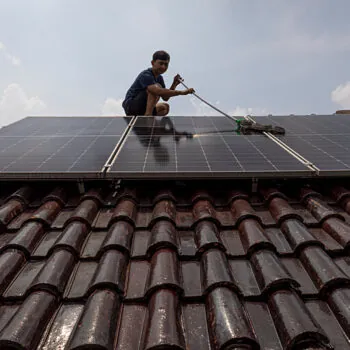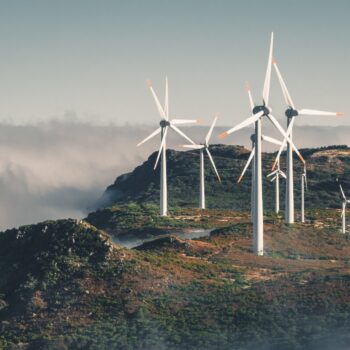With uncertainty set to be the name of the game in the days and weeks following November 3rd, here are five key consideration for EU leaders and diplomats navigating preparations for 2021.
Some things may change…
A Biden administration scenario
1. Unlocks EU-US cooperation on global green recovery and debt relief. The election outcome will significantly determine US federal support for green recovery, and international cooperation on key issues like debt relief. The Trump government opposes the issuance of new International Monetary Fund (IMF) Special Drawing Rights, a key instrument for providing developing countries with quick liquidity to deal with COVID-19 impacts. In contrast, Vice-President Biden’s plan outlines working with international finance institutions to restructure debt particularly to promote investments in a green recovery.
European member states are key shareholders of a number of Multilateral Development Banks (MDBs) including the European Investment Bank, which have been at the forefront of efforts to shift development finance from fossil to clean investments. With a Biden administration unlocking barriers in the IMF and World Bank, the EU could leverage close coordination with the US and UK. During the Italian G20, the EU could prioritize increasing fiscal space and revising a debt sustainability assessment. The EU could also double-down on shifting MDBs away from unsustainable investments. This could go hand-in-hand with a push to recapitalise MDBs to finance a green recovery.
Beyond this, the EU could be instrumental in bringing China, a significant holder of developing country debt, to the table of an international agreement on debt restructurings. Along with supporting developing countries capacity to invest in green recovery.
2. Sets up friendly competition, including a race to the top on industry and zero emissions vehicles. A Biden administration brings friendly competition as well as opportunities for cooperation. Vice President Biden is proposing to mobilise $2 trillion over four years for clean economy investments, including into funding for zero emissions vehicle infrastructure and deployment, green hydrogen and the decarbonisation of energy-intensive industries such as steel and cement. As a result, European policymakers may need to consider accelerating the decarbonisation of transport and heavy industry, particularly on clean steel.
The European Commission currently expects significant climate progress in transport and heavy industry to happen after 2030. Altering these plans, will require early planning, re-assessing timelines and having honest conversations, particularly with the German automobile industry and its Eastern European supply chains in a year where Germany heads to the polls.
…but a number of things stay the same under all outcomes.
3. International climate leadership remains in the EU’s interest. The European Green Deal will only succeed if international partners also shift onto clean development pathways both economically and politically. A Biden scenario will see the US re-investing in a clean economy transition at the federal level and internationally. However, with Biden facing domestic healthcare, economic, social and racial inequality crises, there will not be a return to Obama era foreign policy, nor an immediate shift to a European-style comprehensive Green Deal legislative package.
Meanwhile, even in a Trump scenario, financial and insurance markets, as well as major economies like China, Japan and South Korea are shifting to net-zero. Here it is in Europe’s economic and geopolitical interest to remain at the forefront of this global shift. The EU can benefit from continuing to shape the global clean economy transition.
4. The EU will have to navigate US-China and US-Russia tensions no matter what – all scenarios require a proactive EU agenda to prevent co-option into a major power tug-of-war. In both a Trump and Biden scenario, the US-China relationship as well as US-Russia relationship, particularly on gas exports into the EU, will remain fraught. While a Biden presidency might embrace a more diplomatic style – a lot of the changes to US foreign policy substance are here to stay. Most notably, the use of trade to defend a level playing field for US industry, continued external promotion of US natural gas, and a (bipartisan) hardening stance on China. If Europe wants to maintain its geopolitical ambitions and strategic autonomy than it must continue prioritising high-level dialogues with both China and the US on international climate cooperation.
5. The EU will have to put its money (or at least its Carbon Border Adjustment Mechanism) where its mouth is on trade and climate. A Trump scenario will test the EU’s willingness to commit to trade consequences for climate inaction, especially if potential climate rogues like Brazil, Turkey, Saudi Arabia and Australia are tempted to follow the US lead on Paris-Agreement pull-out. Meanwhile, with the Biden campaign already expressing interest in a US Carbon Border Adjustment Mechanism – all eyes will be on the EU to develop an approach that engages the US, rather than allowing speedy US thinkers to supersede it.
The best bet for the EU to successfully face any outcome, including the chaos of a potential US constitutional crisis, is to agree on a pro-active international agenda. Agreement should be reached on the following:
- What does EU Green Deal Diplomacy look like beyond Carbon Border Adjustment Mechanisms?
- What will EU leaders invest international political capital in next year?
Opportunities for the EU to lead internationally abound – be it through Italy’s G20, through working with the UK on a complementary G7 agenda or through bilateral engagement with China, India, Japan and the African Union.
However, the issues the EU chooses to prioritise will be key for climate leadership success. Topics range from:
- international alignment on sustainable finance standards;
- development finance reform;
- engaging with China and the US on stopping fossil fuel finance at home and abroad; and
- engaging with vulnerable countries to identify concrete systematic changes to development programming, along with support for building resilience and adaption.
The to-do list for European climate leadership will be packed no matter who takes office on January 21st, 2021. Best to be prepared.
Photo by Victor Moussa on Adobe.
This project has received funding from the LIFE Programme of the European Union.



